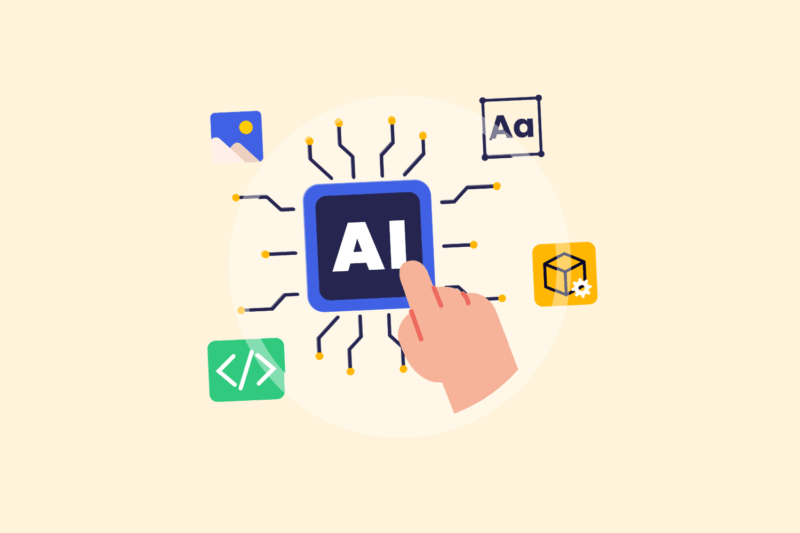Prompt-optimized pages: how to get AI to reference your content

AI models such as ChatGPT, Gemini and Claude use public Web content to generate answers. They do not generate direct search results, but construct answers based on recognizable patterns, context and authority.
Prompt-optimized pages contain content structured in such a way that AI models are more likely to select, paraphrase or cite them as sources.
What are prompt-optimized pages?
Prompt-optimized pages are not only findable in search engines, but also usable by AI to build answers, something that is increasingly common. These pages are content complete within a clearly defined topic. They are also strongly built semantically with entities and related terms. Furthermore, they are optimized for immediate explainability and contextual usability
The content should be directly understandable without additional explanation. The better a page functions as a fragment source, the more likely it is to be included in AI output. (1)
How AI models select sources
AI models do not use classical ranking in search engines. Instead, they process billions of text fragments based on patterns. They recognize content that:
- Answers frequently asked questions
- Clearly defines or explains terms
- Makes relevant connections within a topic
These elements determine whether AI considers a page to be usable.
AI models look for content that is understandable, consistent and content that is reliable. Content that is not only informative, but also consistent in structure and language with what AI recognizes as “usable” within prompts.
Getting started with SEO? Feel free to get in touch.

How to make content suitable for prompts
To function as a resource in AI-generated answers, your content must be clearly structured, thematically complete and technically well supported.
That starts with formulating clear headings, preferably as questions or statements, and answering them directly at the beginning of each paragraph. Avoid long introductions or repetitions so the gist is quickly clear.
In addition, it is important that you cover the topic in both breadth and depth, using relevant entities and concepts that are semantically related. That way, you provide AI with sufficient context without straying from the main topic.
Finally, technical signals play a crucial role: make sure that structured data is correctly applied, such as “FAQPage” or “Article,” and that metadata reinforces the topic. Only then will your content become both findable and credible within AI interfaces and search engines. (2)
More than just search engine optimization
Prompt-optimized content sits at the intersection of SEO and AI readability. It is not a replacement for traditional SEO, but an extension of it. You take search intent into account, but also the question: how useful is this content as a response in a simulated dialogue?
This requires adjustments in tone, structure and information density. The text must provide independent value as well as be understandable outside the context of your Web site. (3)
Monitoring and adjustment
Unlike classic SEO, you cannot measure exactly when your content is used in AI responses. Still, you sometimes catch signals:
- Increase in branded searches following AI referrals
- Visiting deep content pages without interference from regular SERPs
- Increased visibility in AI interfaces that provide source citations
Use those signals to adjust your content: improve your coverage of related terms, expand definitions or rewrite content for immediate usability.
AI referral to own articles
A nonprofit organization wanted their scientific articles to be cited more often as sources in AI results. I rebuilt pages with more clearly structured headlines, semantically strong intros and content that matched frequently asked questions.
Prompt tests showed that large language models were more likely to pick up content in this form. Within four weeks, we saw first references to their site appear in tools like Perplexity and Poe.
Summary
Prompt-optimized pages are the answer to a new form of findability. By writing content that is logical, clear and contextually strong, you increase your chances of functioning as a resource in AI systems.
This requires more than keyword-oriented writing. It requires structure, semantic understanding and a focus on usability within dialogue-driven environments. Those who master that will be findable in search engines as well as present in the AI interfaces of the future.
| # | Source | Publication | Retrieved | Source last verified | Source URL |
|---|---|---|---|---|---|
| 1 | How to Optimize for AI Search Results in 2025 (Semrush Blog) | 18/07/2025 | 18/07/2025 | 12/11/2025 | https://www.semrush.com/.. |
| 2 | How to prepare for Google SGE: Actionable tips for SEO success (Search Engine Land) | 11/10/2023 | 11/10/2023 | 21/11/2025 | https://searchengineland.. |
| 3 | How AI is reshaping SEO and what’s next (Search Engine Land) | 15/07/2025 | 15/07/2025 | 06/11/2025 | https://searchengineland.. |
- Silva, C., Lindley, A., & Lahey, C. (18/07/2025). How to Optimize for AI Search Results in 2025. Semrush Blog. Retrieved 18/07/2025, from https://www.semrush.com/blog/ai-search-optimization/
- Philipp Götza. (11/10/2023). How to prepare for Google SGE: Actionable tips for SEO success. Search Engine Land. Retrieved 11/10/2023, from https://searchengineland.com/prepare-google-sge-tips-seo-success-433083
- Edna Chavira. (15/07/2025). How AI is reshaping SEO and what’s next. Search Engine Land. Retrieved 15/07/2025, from https://searchengineland.com/how-ai-is-reshaping-seo-and-whats-next-458772






